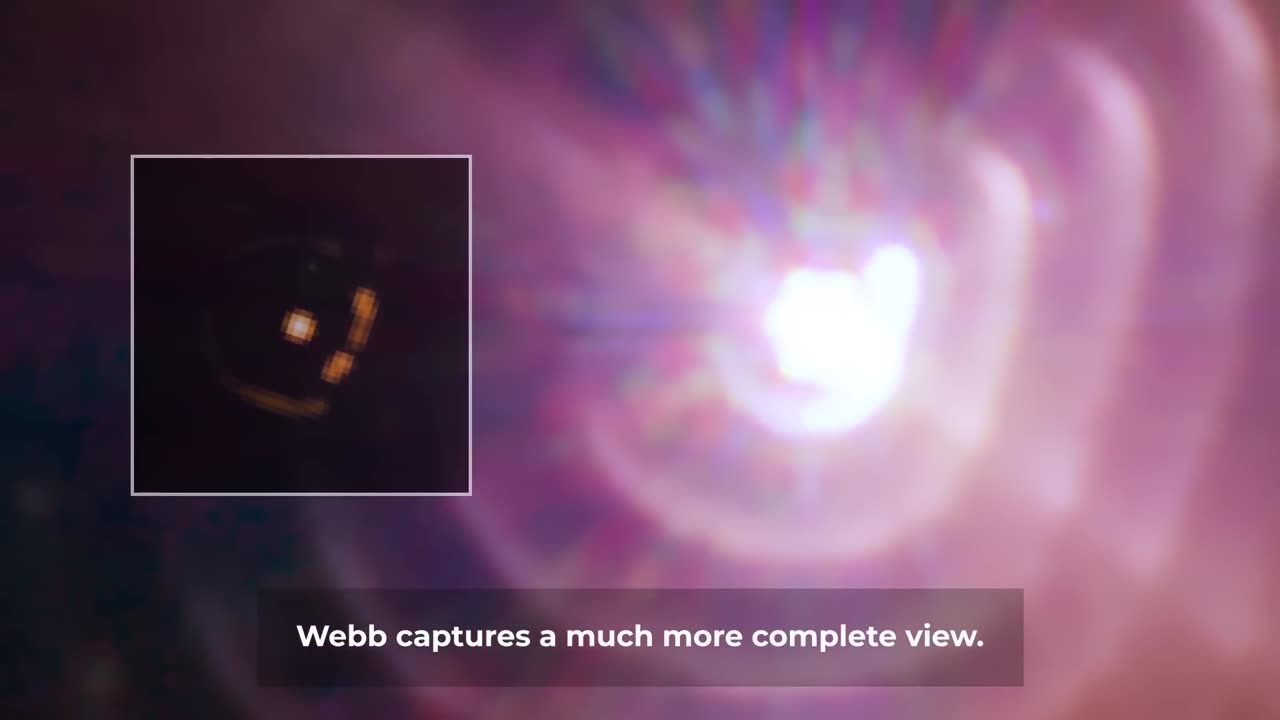Premium Only Content

Cosmic Dust Rings Spotted by NASA’s James Webb Space Telescope | Nasa Videos | Rumble
Cosmic dust – also called extraterrestrial dust, space dust, or star dust – is dust that occurs in outer space or has fallen onto Earth.[1][2] Most cosmic dust particles measure between a few molecules and 0.1 mm (100 μm), such as micrometeoroids. Larger particles are called meteoroids. Cosmic dust can be further distinguished by its astronomical location: intergalactic dust, interstellar dust, interplanetary dust (as in the zodiacal cloud), and circumplanetary dust (as in a planetary ring). There are several methods to obtain space dust measurement.
In the Solar System, interplanetary dust causes the zodiacal light. Solar System dust includes comet dust, planetary dust (like from Mars),[3] asteroidal dust, dust from the Kuiper belt, and interstellar dust passing through the Solar System. Thousands of tons of cosmic dust are estimated to reach Earth's surface every year,[4] with most grains having a mass between 10−16 kg (0.1 pg) and 10−4 kg (0.1 g).[4] The density of the dust cloud through which the Earth is traveling is approximately 10−6 dust grains/m3.[5]
Cosmic dust contains some complex organic compounds (amorphous organic solids with a mixed aromatic–aliphatic structure) that could be created naturally, and rapidly, by stars.[6][7][8] A smaller fraction of dust in space is "stardust" consisting of larger refractory minerals that condensed as matter left by stars.
Interstellar dust particles were collected by the Stardust spacecraft and samples were returned to Earth in 2006
-
 LIVE
LIVE
ZWOGs
11 hours ago🔴LIVE IN 1440p! - EFT w/ crgoodw1n, Kingdom Come Deliverance, Splitgate 2, & More! - Come Hang Out!
907 watching -
 30:09
30:09
Afshin Rattansi's Going Underground
1 day agoCurtis Yarvin: ‘Trump 47 is 10x More Powerful than Trump 45’ & the TOXIC US-Israel Relationship
17.8K31 -
 LIVE
LIVE
Drew Hernandez
8 hours agoTRUMP HINTS DEMS COULD HAVE PLANTED FAKE EVIDENCE & MANIPULATED EPSTEIN FILES
1,012 watching -
 LIVE
LIVE
Eternal_Spartan
11 hours agoThe Legend of Zelda: Majoras Mask Ep. 5 | USMC Vet | Come Join the Best Chat on Rumble!!!!
102 watching -
 3:44:24
3:44:24
Barry Cunningham
6 hours agoBREAKING NEWS: LIVE COVERAGE OF NEW YORK POLICE OFFICERS UNDER SIEGE!
75.7K64 -
 2:51:25
2:51:25
The Pascal Show
4 hours ago $0.34 earnedBREAKING! Active Shooter In Midtown Manhattan NYC Multiple People Shot!
11.7K -
 10:25
10:25
MattMorseTV
9 hours ago $2.05 earnedVance just DROPPED a NUKE.
27.1K38 -
 LIVE
LIVE
Jokeuhl Gaming and Chat
6 hours agoDARKTIDE - Warhammer 40k w/ Nubes and AoA
165 watching -
 2:53:08
2:53:08
Shoriantrax
3 hours agoLIVE: Hardcore Chaos in Tarkov – Loot, Die, Repeat!
5.99K -
 LIVE
LIVE
John_Goetz
3 hours agoJohn Gets Gaming - Medal of Honor Vanguard Part 2
14 watching